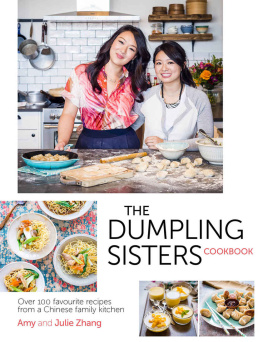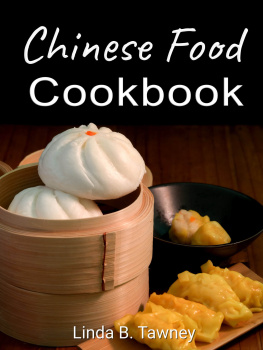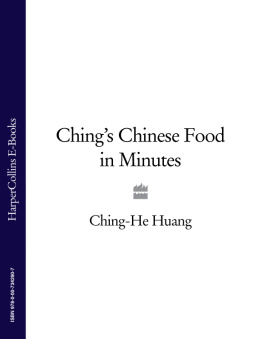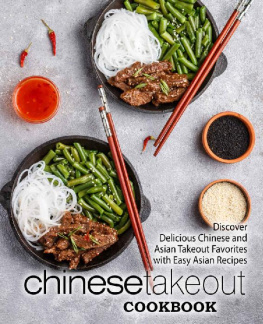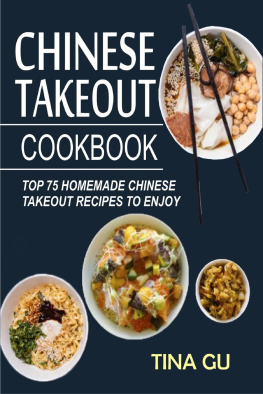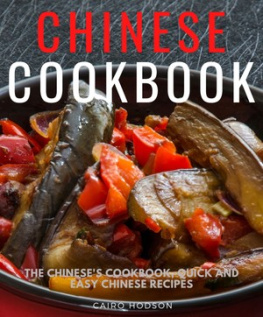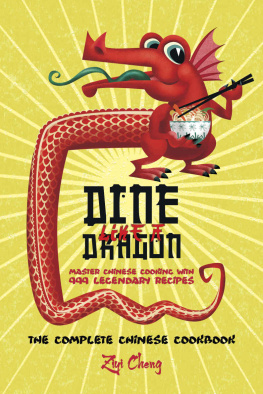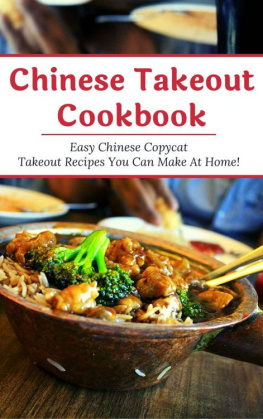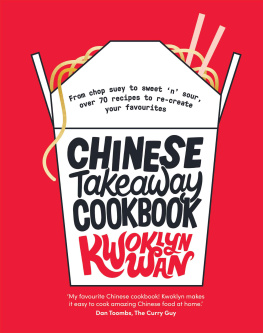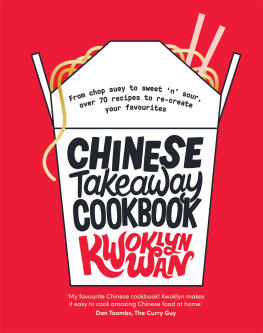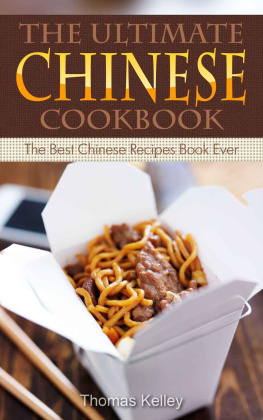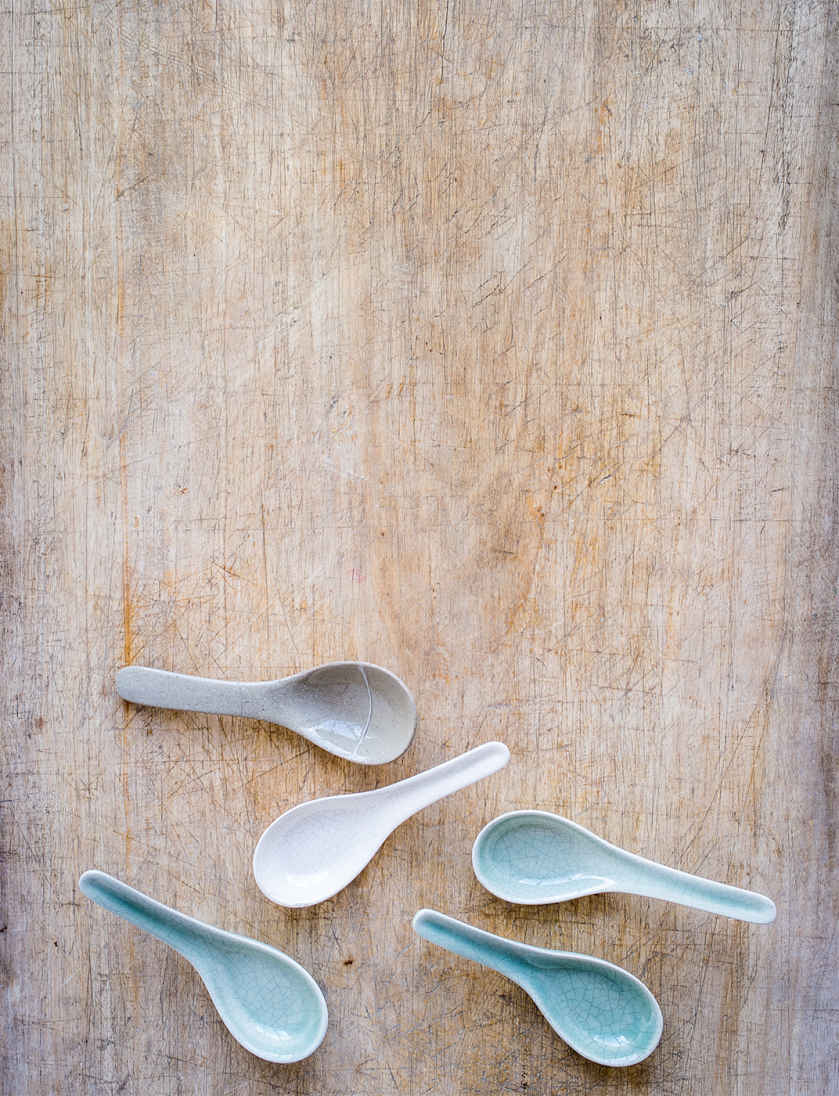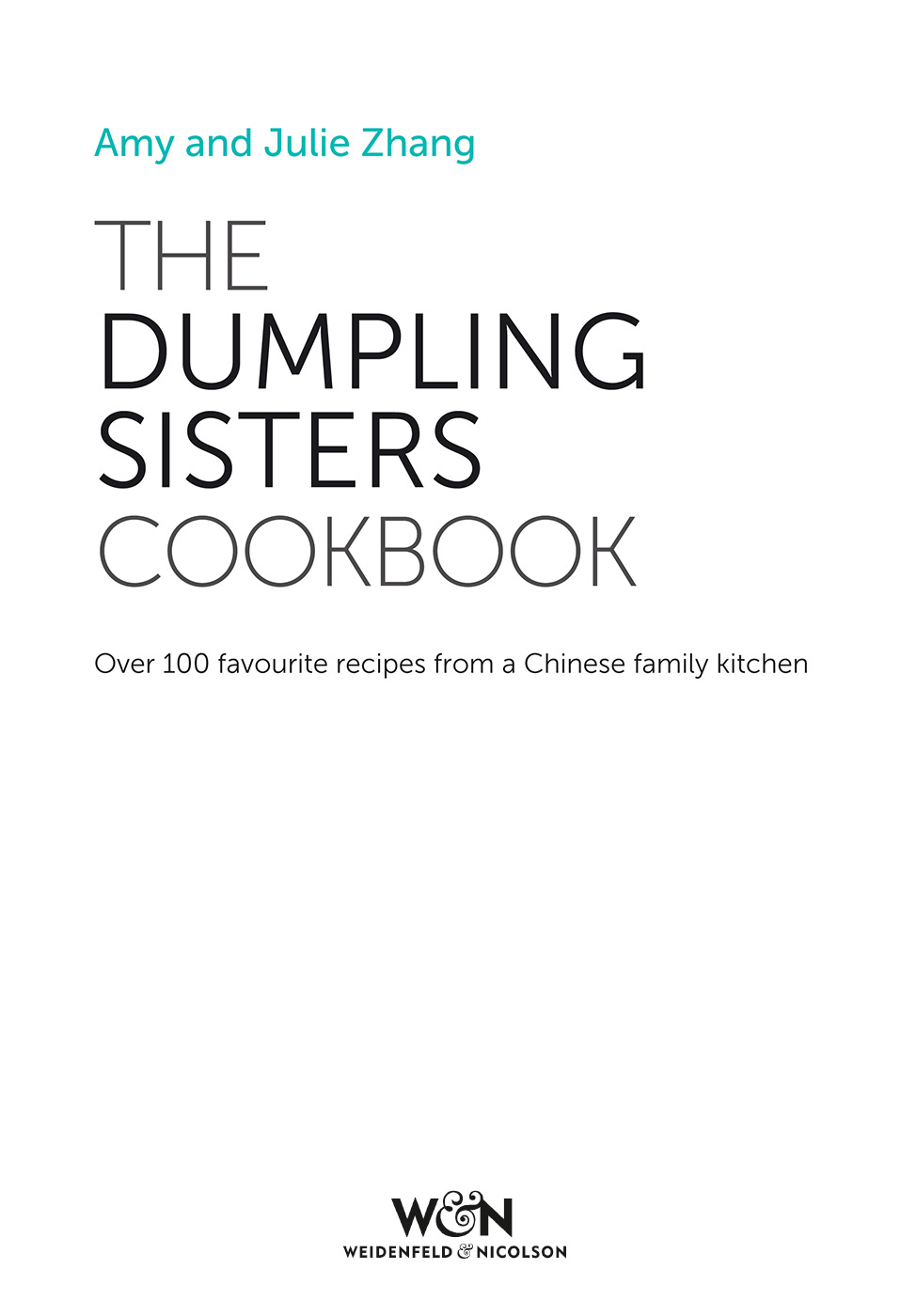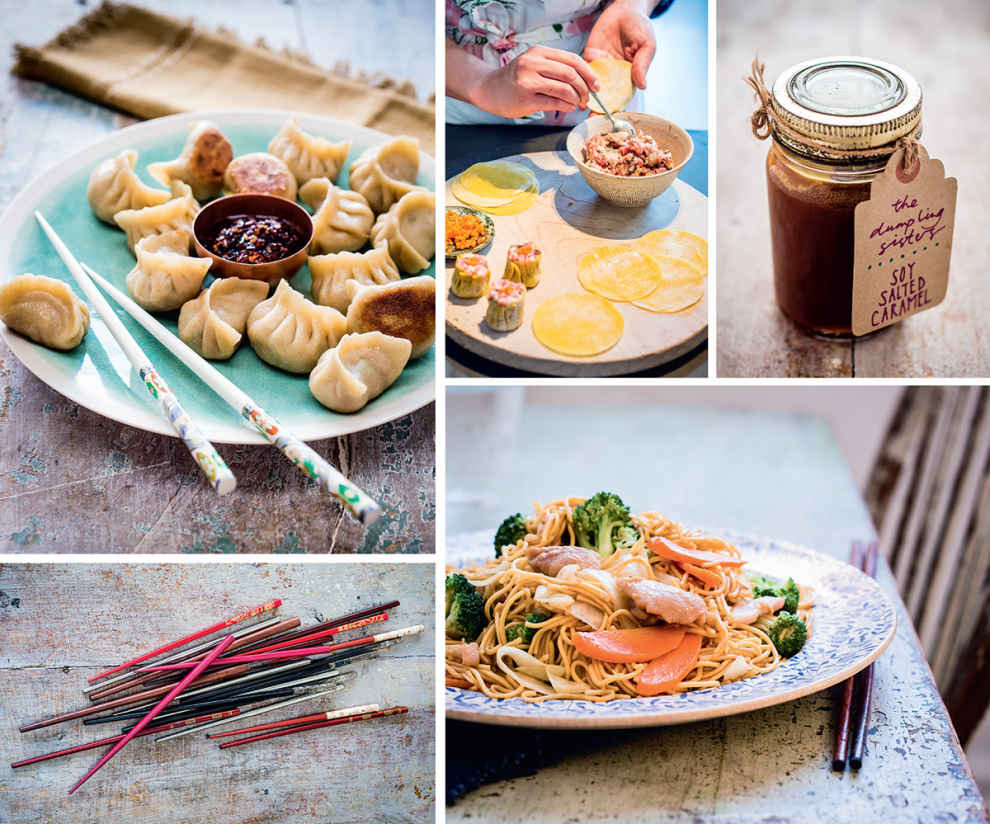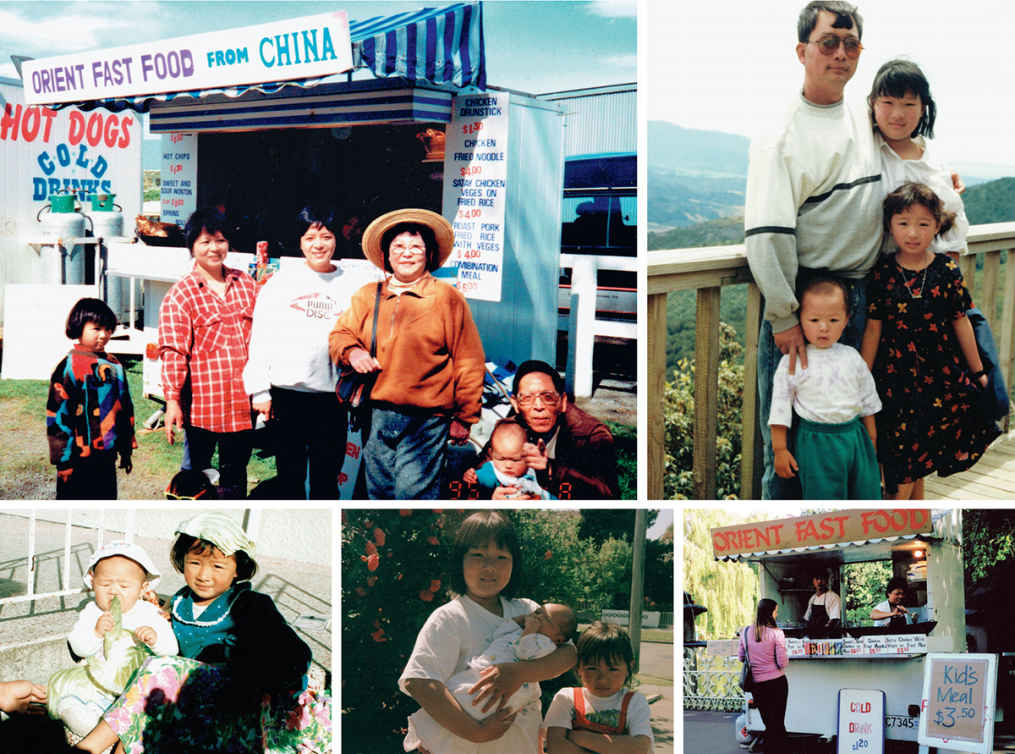For Pei Wen, Maria, and Justin
Wei, lei sic joh fan mei ah?
, ?
CONTENTS
Hi there. Were Amy and Julie. Were sisters, keen home cooks and (95 per cent of the time) best friends. We grew up in beautiful New Zealand and that is where our food story begins.
At the very centre of that story is family. For over two decades of dewy Sunday mornings, our family has been piling into Dads temperamental old van. Its usually five slightly groggy people in the front and a serious game of Tetris in the back: big white buckets of fresh ingredients, jumbo dried noodle nests and plenty of soy sauce all neatly and securely stacked to ensure that the short journey to the market doesnt end in a premature stir-fry. Towing behind the van is our rickety food cart, which has become much more than a space for selling. Its a stage for Mum and Dad to showcase their amazing cooking skills, an adored fixture at the Riccarton Rotary Sunday Market in Christchurch, and an honorary member of our family. The cart at stall number A25 represents the centre of a much larger family, too, for it is where our customers have seen us and our little brother Justin grow into adults.
It was the combination of setting up shop at the market and being immersed in a home where food meant family that taught us how to cook and eat. Its no wonder that our fondest childhood memories are inextricably connected with food: from nightly dinners at a table lovingly adorned with colourful sharing dishes, to road trips with delicious soy chicken packed in the chilly bin.
Although we were oceans away from China, Mum and Dads creativity in the kitchen gave us a taste of their childhoods. And what a fabulous team they are: Dad is the deep-frying and marinating expert, while Mums (all five feet of her) ability to toss an Everest of noodles in a wok never ceases to amaze. They made eager students (and taste testers) of us and we absorbed every lesson.
In recent years, the same hunger for learning brought us to the other side of the world, to study subjects far removed from food: Amy for a chemistry PhD at Cambridge and Julie a criminology Masters at Oxford. We finished our degrees at around the same time, and from the closing of one chapter sprung a mutual urge to go back to our food roots and so The Dumpling Sisters was born.
We knew that for a lot of people, making Chinese food at home, especially dumplings, might seem daunting or mysterious. So we set up a blog and made YouTube videos dedicated to sharing what we know and love about Chinese food. Although it was terrifying and awkward to see ourselves on film at the beginning, we had a hunch that our encouraging video tutorials could help home cooks feel more confident about cooking our recipes. Above all, the videos are an invitation to cook along with us in our kitchen: anytime, anywhere.
In the first few months family and friends were our loyal (and only!) followers so when we received the first photos of our food recreated in home kitchens all over the world it was truly heart-warming. Fast-forward to today and we are still sharing our favourite recipes online; recipes that are drawn from the unwritten Cantonese cookbook that was so central to our upbringing.
Our recipes have always been the heartland of what we do, so when the idea of writing a cookbook was floated we could hardly wait to jump right in. This cookbook is dedicated to every long-time fan of Chinese food, and the newly curious.
We would love for these pages to become dog-eared and splattered with all manner of sauces and seasonings as you cook your way through the chapters that represent different ways to enjoy Chinese food. We have got pretty dim sum, fuss-free meals, traditional family-style eating, a major noodle-fest, dishes fit for a proper feast, and moreish baked goods, too. And like all good things this one ends with dessert, namely a selection of terrific Chinese desserts something that we hope will convince you that the Chinese can do great sweet things too.
At its very heart, The Dumpling Sisters Cookbook is an invitation to cook alongside us so you too can learn by doing, just as we did at Mum and Dads side.
With that, we wish you happy cooking and even happier eating.
A&J x
The Chinese revere textures and sensations in the mouth just as much as they do flavour. This is not highbrow stuff; it is simply a part of the eating experience. By extension, hau gum (literally, mouthfeel) is a part of our everyday language, peppering our dinner conversations with appreciative murmurs of how satisfyingly faa, lum and so on certain dishes are. Because there isnt always an equivalent English term for the various categories of mouthfeel, we have tried our best to describe our favourite textures and sensations below. Our list is not exhaustive, but these mouthfeels are among the most common. Draw from them the next time you eat something with a particularly enjoyable or surprising texture and soon you too will be dropping the terms during meals with friends and family.
FAA
Faa foods are usually rich and melt in the mouth. They are sometimes even delicate enough to collapse at the slightest touch of your tongue. Think chocolate mousse, fluffy, buttery mash and crumbly shortbread. Try the potatoes in our Potato and Chicken Curry () for some serious faa action.
(BOK BOK) CHEOW
The onomatopoeic name of this one gives it away: cheow is anything with great crunch, and adding the prefix bok bok means that something is super- cheow . For example, roast pork crackling and filo pastry are at their finest when they are cheow . The same goes for Crispy Noodle Nests ().
SONG
Food is song when it has a refreshingly crisp bite, like coming across a piece of cucumber in a leafy salad. Other song foods include tender calamari, the flesh of lychees and fresh watermelon. Some of our favourite song recipes include our Stir-fried Cucumber ().
SOUNG
These foods readily crumble or flake when you bite into them because they have a loose and airy structure. Puff pastry and deep-fried prawn crackers are delicious examples, as are Sweet and Salty Walnut Cookies ().
WAAT
As one of the most sought-after mouthfeels in Chinese cooking, waat foods are silky, slippery and smooth. They also tend to be moist; think fruit jelly, mangoes and perfectly ripe avocados. In Cantonese cooking, marinating meat with bicarbonate of soda and cornflour helps to make it more waat . Achieving the waat texture makes or breaks dishes like Whole Steamed Fish ().
DAAN NGAA
This means springy teeth, so foods with this quality bounce against your bite as you sink your teeth into them. Turkish delight does the trick, as do the Aromatic Steamed Beef Meatballs ().

